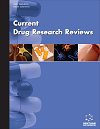
Full text loading...

Preservatives are widely used chemical agents that inhibit microbial growth and extend the shelf life of food and pharmaceutical products. However, growing concerns over the potential adverse effects of synthetic preservatives, such as parabens and benzoates, have emphasized the need for precise and reliable analytical methods for their detection and quantification.
This review evaluates and compares various analytical techniques employed for preservative analysis in pharmaceutical formulations, including chromatographic (HPLC, GC-MS), spectroscopic (UV-Vis), electrophoretic (CE), and electrochemical methods. Parameters such as sensitivity, accuracy, separation efficiency, and applicability in complex matrices were assessed across different techniques.
High-performance liquid chromatography (HPLC) demonstrated superior sensitivity with detection limits as low as 0.01 µg/mL and excellent linearity (R2 > 0.999), making it the most widely adopted method. Capillary electrophoresis (CE) provided rapid analysis within 10 minutes and high recovery rates (>98%). UV-Vis spectroscopy, although economical, faced challenges in analyzing complex samples due to spectral overlapping. Gas chromatography–mass spectrometry (GC-MS) excelled in identifying volatile preservatives through enhanced structural elucidation.
HPLC emerged as the gold standard for routine preservative analysis due to its high precision (RSD < 2%), versatility, and ability to quantify multiple preservatives concurrently. While GC-MS offers detailed structural insight, it is more suited for specific applications. Emerging methods like UPLC and CE are gaining attention for their speed and reduced solvent usage, aligning with green analytical chemistry principles.
Robust and sensitive analytical techniques are essential for the accurate determination of preservatives to ensure pharmaceutical safety and regulatory compliance. Continued innovation and optimization in analytical methodologies enhances the reliability of preservative monitoring and contributes significantly to public health risk assessment.

Article metrics loading...

Full text loading...
References


Data & Media loading...